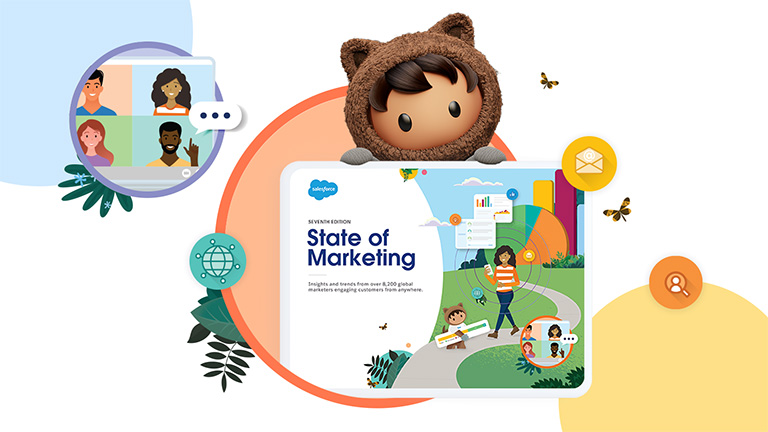In 2020, 83% of cookies being used in Online Behavioural Advertising were third-party cookies. Cookies are files that remember browsing data to personalise and improve customer experience online. Information shared with one website can then be used elsewhere, without needing to ask the customer for the same information again.
This makes personalising customer experiences much easier, but it also raises privacy concerns. While personalisation is appreciated, customers do not want their browsing data shared with just any company out there.
In 2017, ITP (Intelligent Tracking Prevention) was introduced by Apple to block all third-party cookies on Safari. Since then, Google has also announced that its browser, Chrome, will stop allowing all third-party data mining as soon as 2023.
Personalising customer experiences in a cookie-less world
In the past two decades, marketing strategies and personalisation technology have come to pivot around detailed customer profiles. These profiles are usually built with data acquired through third-party cookies. Some customer behaviours (browsing history and click patterns) are only traceable because of these cookies. With its phasing out, however, marketers need to realign their strategies for a world where using third-party data may no longer be considered ethical.
Customers mistrust brands that are unclear about the ways they collect and use data. To restore their trust, businesses will have to reassure customers that their data isn’t being fetched from or sold to undisclosed third parties that may not have their consent.
Despite all these challenges, personalisation will continue to be an important aspect of lead nurturing and conversion. Businesses need to find ethical alternatives to continue providing personalisation in every customer interaction. And the foundation of this will be built on consensually shared first-party data.
Revisiting personalisation with first-party data
First-party data is the most accurate form of data, as it is consensually shared by customers with brands they support. Access to rich first-party data enables meaningful personalisation. Workflows and campaigns can be aligned with customers' journeys. And intelligent recommendations can help provide better offers and prices and meet their real needs.
First-party data is also unique and more standardised, as external entities cannot manipulate it. The uniqueness of the data means you can use it to find differentiators quicker than your competitors and deliver experiences your audiences truly seek.
Leverage your first-party data for personalisation
Here’s how you can get started with building first-party data:
1. Become cookie independent
The prerequisite to embracing first-party data is cleansing your database of third-party data. You can then replenish your customer profiles with relevant information sourced directly from your audiences. First-party data collection calls for a stronger reliance on landing pages, forms, subscriptions, membership programs, e-mails, service calls, chatbots, mobile app data, offline surveys, social media channels, and website visitor tracking.
Storing and using all this data will also require a new data infrastructure. A customer data platform (CDP) can help you gather, unify, and manage data from across departments and owned channels to build a 360-degree customer view. This helps gain a deeper understanding of the customer.
2. Improve engagement and personalisation with data analytics and prediction tools
When you start using the right channels and tools, you can continuously build a comprehensive customer database that can be updated and accessed in real-time. To make the most of all of this data, use powerful analytics and prediction tools that can extract and deliver deeper customer insights from it.
Use tools like Marketing Cloud Intelligence to empower different teams with all the right data and intelligence they need on cross-channel campaigns and activities to understand where and how your customers love engaging with your brand. With enhanced segmentation, testing, and reporting, you can optimise the value of your content across channels to make advertising and marketing more contextual. Then, improve customer experience by leveraging these insights to create more personalised landing pages, ads, and messaging for extremely targeted audience segments.
Artificial Intelligence (AI) can enhance the capabilities of your analytics tools to improve the predictability of customer behaviour and preferences. This can help you trigger meaningful actions exactly where customers are. You can guide them along the most appropriate customer journey with the most relevant next best actions, offers, products, or content.
Coming up strong at the finish line, even without the sugar-rush
Addressing privacy concerns and regaining customers’ trust is increasingly becoming a priority for many businesses. Marketing efforts for improved personalisation strategy will see a drastic shift, and first-party data will be the life force of marketing and advertising.
Building the infrastructure necessary to make the shift ahead of time is going to be the winning stroke.
Salesforce Marketing Cloud is a solution that is built around the customer. It helps marketers build lifelong relationships with customers using data-first digital marketing strategies. Its many tools and technologies help break down silos, helping marketers build a single source of truth that enables timely, contextual communication while staying compliant.





